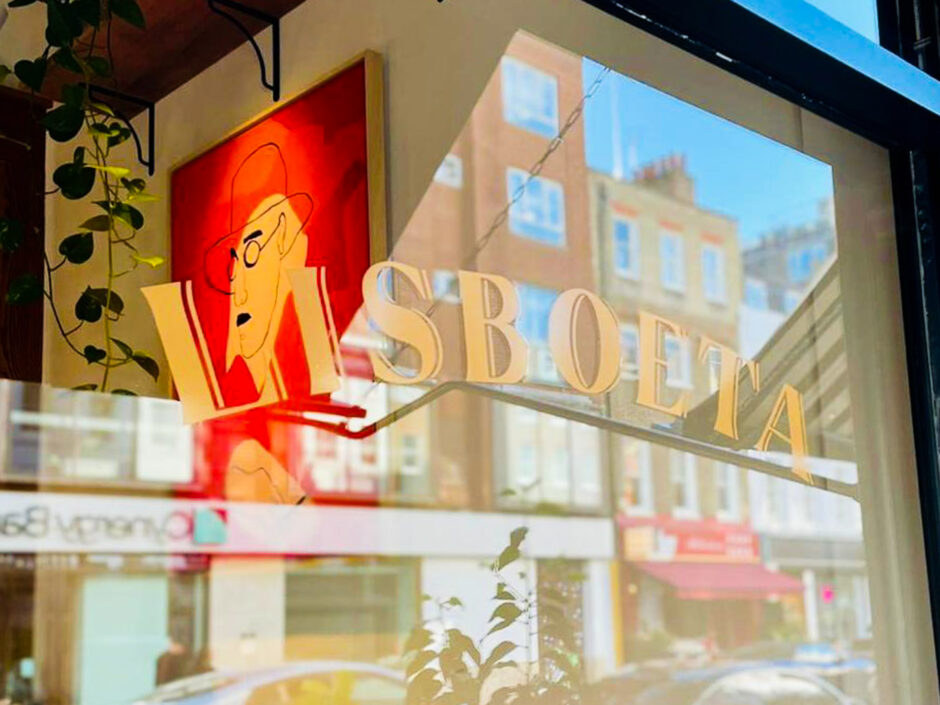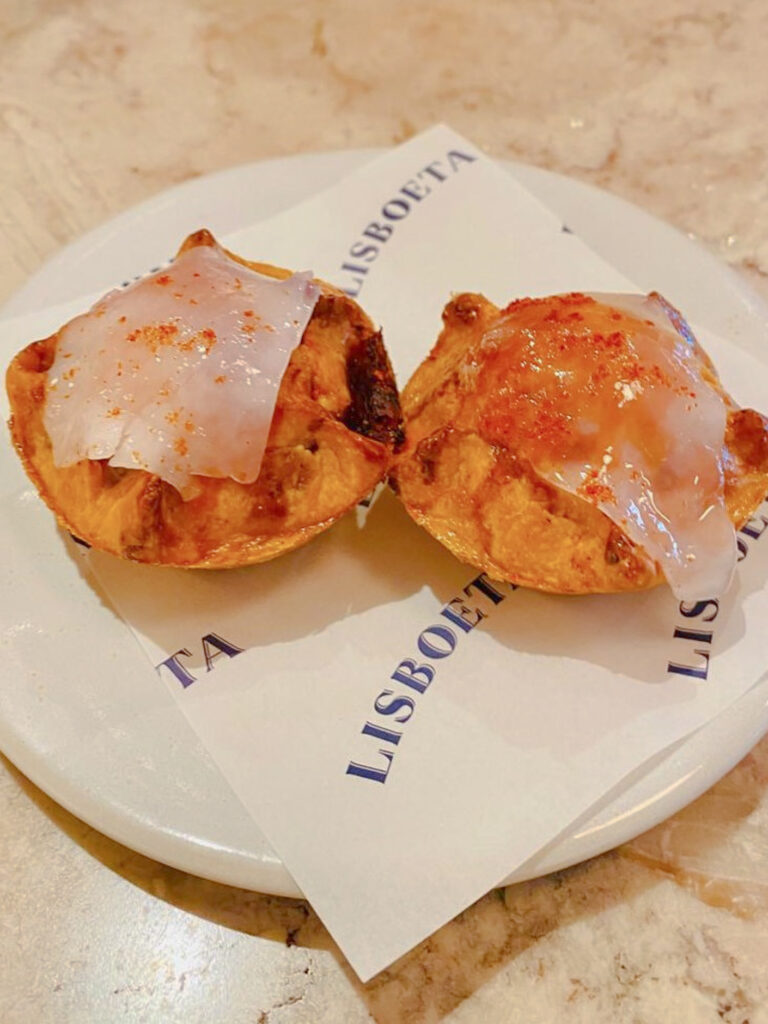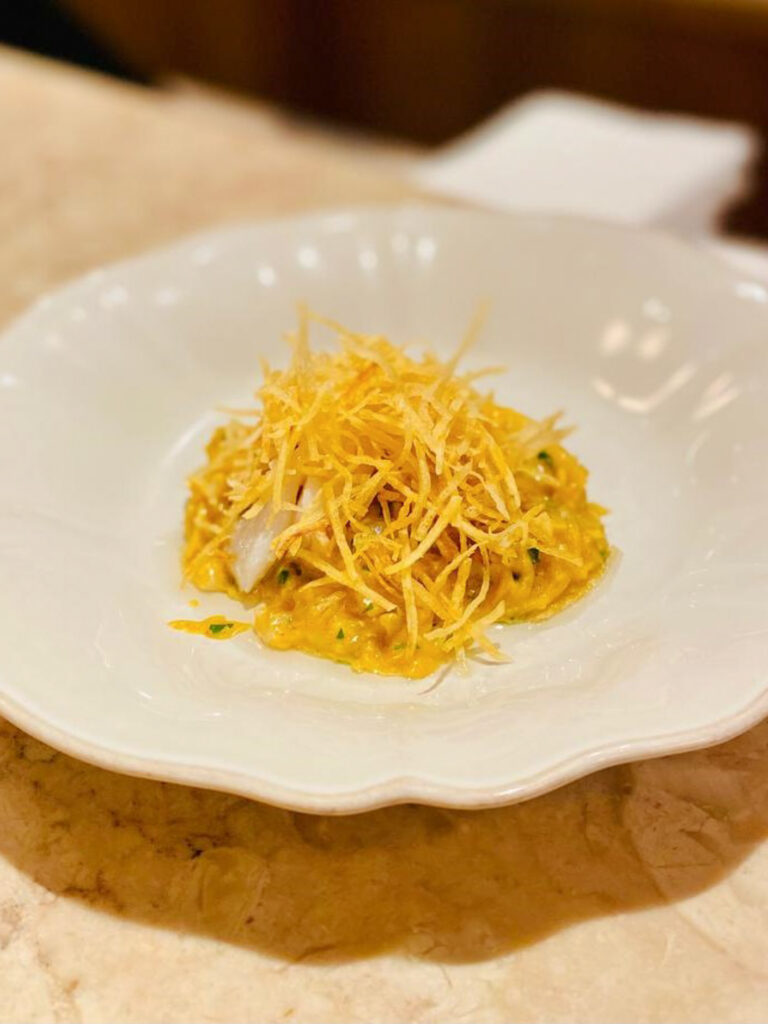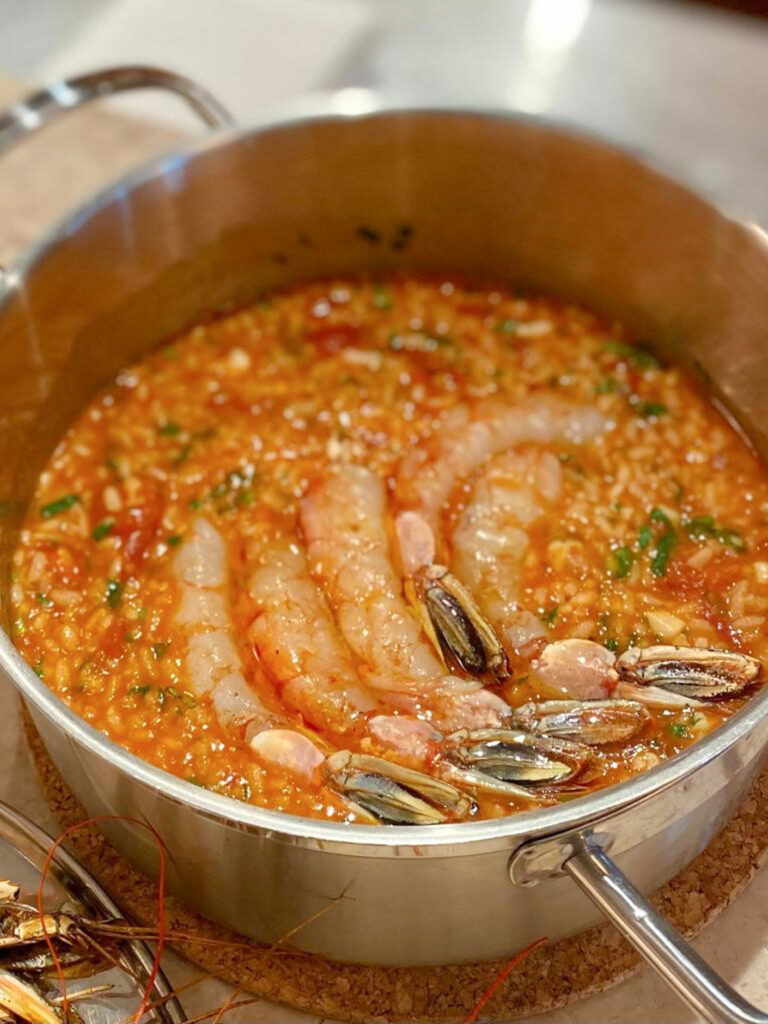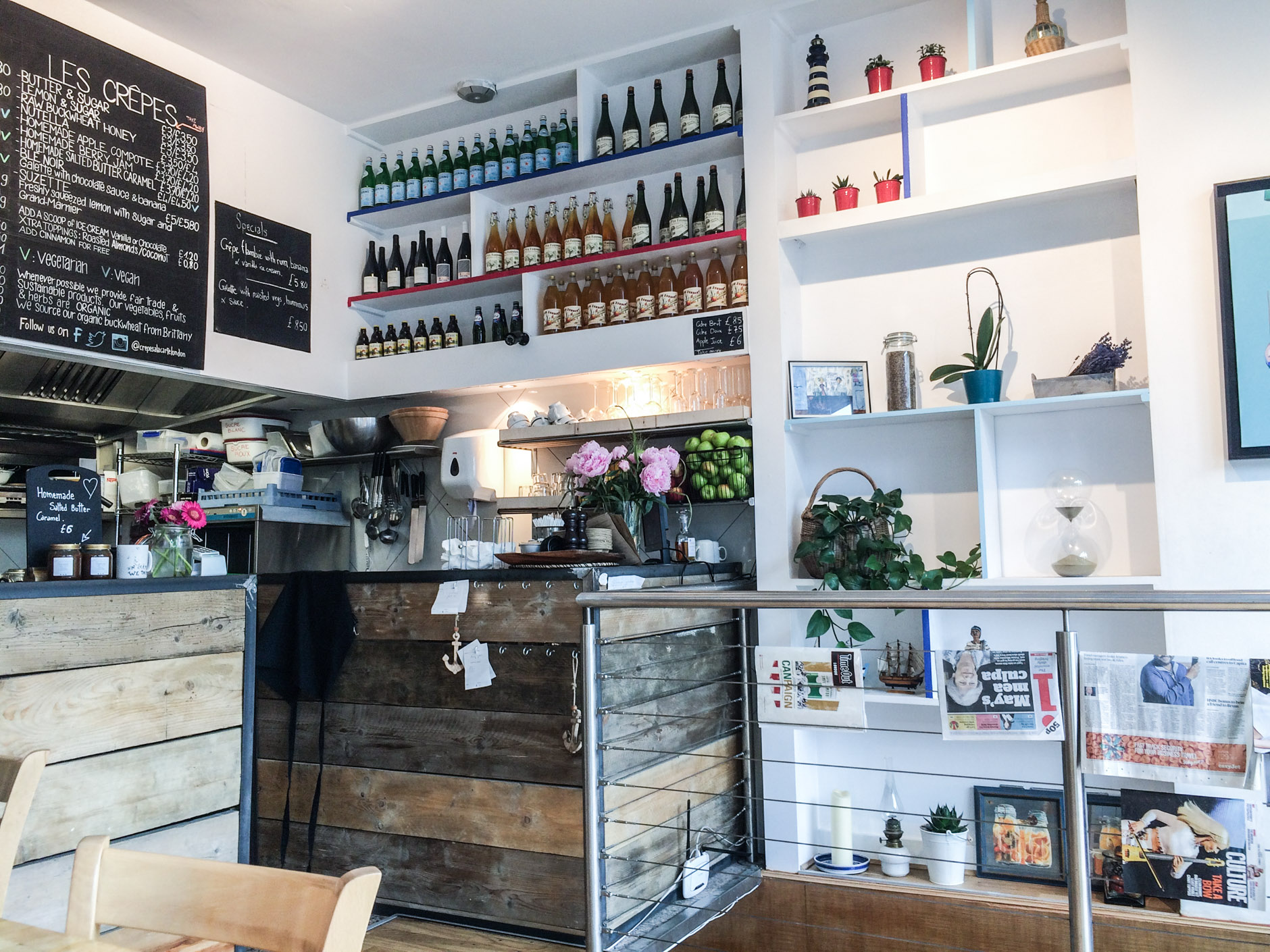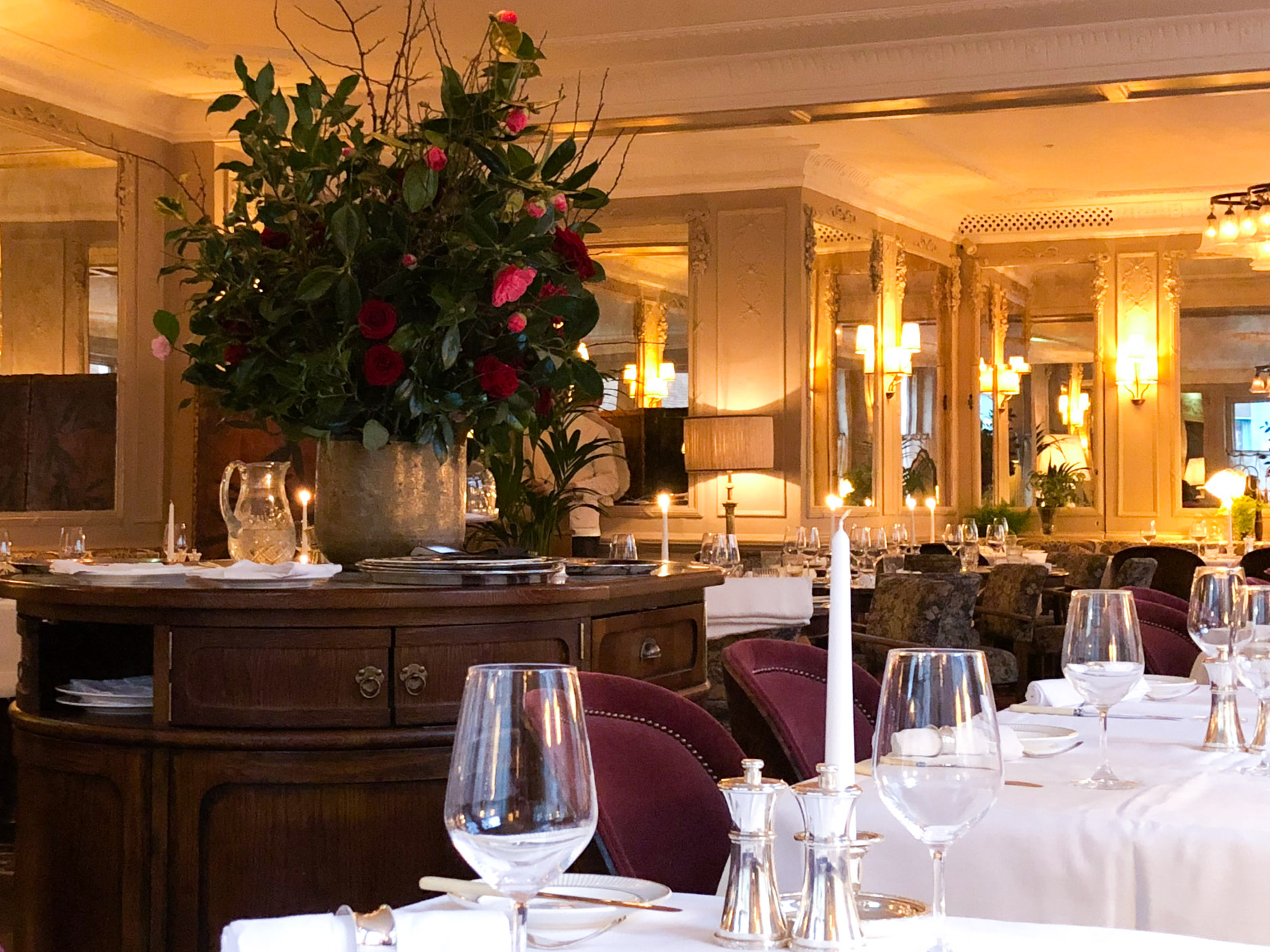A cerulean blue townhouse with white framed windows sits in the middle of Charlotte Street, looking as if it has been plucked straight from the bairros of Lisbon. It’s an idealistic vision of Portugal in London. And of course, it’s all from the brilliant, boundless mind of Nuno Mendes. His well-traced career is woven into the fabric of London’s recent culinary history: Viajante helped put a certain style of east London cooking – relaxed but refined – on the map; Chiltern Firehouse was THE place to eat for the city’s socialites; and Mãos in Shoreditch shone an indelible light on the value of the avant garde in cooking and service.
Nuno spent a not inconsiderable amount of recent time in his native Lisbon working at the Bairro Alto Hotel running and reinventing their flagship restaurant offering, BAHR: that imprint is acutely apparent at Lisboeta, arguably his most concise, and most ‘Nuno’ project to date.
As you enter, the totality of the space is split. A simple, elegant dining room upstairs, refined counter at ground level, basement bar below. Opposite the ground floor bar, whitewashed walls are lightly adorned with further nods to Portugal, including a statuette of San Antonio (Anthony of Padua), Lisbon’s patron saint. Legend states that after joining the Franciscans in Coimbra and Lisbon, he was placed in charge of hospitality in the Monastery of Santa Cruz. His image watches the team, perhaps inspiring some high power of hospitality, employing a tactic not seen in London to date: the use of the divine.
I for one am just about happy to fork out, delighted that Nuno Mendes has transported a slice of Lisbon to London
Whilst the counter may be seen by some (snobs) as a step down from the “proper” experience of the dining room, I, for one, have always preferred it. Not least for the joy of interacting with the team behind the counter. Here, the responsibility of the staff is greater than that of the upstairs space. They must be runners, servers, sommeliers and bartenders simultaneously, all in a physical space that denies them respite from the relentless gaze of the guest.
Those hospitalitarians make perching a joyful experience: prompt service, charming conversation, exceptional knowledge, all sagely dispensed from behind the marble top bar.
We start lunch with a vindalho empada each. A sturdy pastry with a subtly spiced pork interior, topped with a sliver of well-rendered pork fat. It’s a genuinely stunning couple of bites, over all too quickly. Grilled mackerel on toast with peppers arrives next. The mackerel is every bit as glistening and pungent as you’d expect and the whole plate, simple yet effective, delivers a marvellous balance of sweet and savoury.
Things weren’t all smooth sailing on the food side though. The mushroom açorda was a delicious creation, yet felt texturally off. The perfectly cooked mushrooms sat in a rather insipid broth with clumps of bread sauce as opposed to a smoother, more together serve which one might expect in Portugal. The bolo de bolacha dessert too didn’t quite hit the mark: torched meringue and biscuit ice cream gave a monotextural pudding that again lacked the impact of the more classic version one might expect in the country.
Whilst some of the textures misstepped, the flavours were always on point. The pork fat dessert – Lisboeta’s version of abade de priscos – with a port caramel sauce was a stunning creation: simple and gluttonous, the dish employed that classically Portuguese egg-yolk-enriched flavour profile to deliver a fatty custard of supreme calibre.
The true heroes of the meal though came via bacalhau à brás and an arroz de marisco. The former, a symbol of Portuguese cooking and culture: salt cod. Here, served utterly true to correct convention, topped with crunchy potato, made creamy by the overt and emblematic use of eggs – ever-present in Portuguese cooking – and onion cooked down until sweet and translucent. There is a fabulous restaurant in Porto called Semea. It was opened by an exceptionally talented chef, Vasco Coelho Santos, and before moving to its new riverside location, they had a tiny site in the heart of the city, serving just a dozen or so guests at any one time. When I say that Lisboeta’s bacalhau a bras is as good as Semea’s, it’s the highest accolade I can think to give.
The arroz de marisco main course is another triumph. Tiny cuts of squid run through the tomato flavoured seafood rice, itself served to diners in the Portuguese tradition, still contained within the saucepan it was cooked. Alongside the rice arrive five deeply roasted prawn heads for sucking and slurping, the true treasure of the thing given an extra savoury jolt thanks to barbecue-esque torching. The bodies of said decapitated crustaceans lie de-shelled, floating in the decadent, delicious rice. Guests are given the choice to promptly remove them for a less cooked, creamier prawn, or leave sitting in the heat, to firm up a touch. Fortunately there are five served here, so one can enjoy both methods of consumption with glee.
There is of course a price to pay for all this deliciousness. Lunch for two with a couple of finos (that’s a half pint to you and me) and a nice bottle of wine comes in at a shade over £100pp, which even in these cost-of-everything days still feels expensive. And yes of course you can get away with spending far less: should you pop in for an empada, some cod and a glass of wine, you’ll be very well fed for under £30 (with service) but for the full Portuguese experience, Lisboeta turns out to be only slightly less expensive than flying to Portugal itself.
Yet if this is the price one pays for convenience, I for one am just about happy to fork out, delighted that Nuno Mendes has transported a slice of Lisbon to London.
30 Charlotte Street
Fitzrovia
London
W1T 2NG
November 2022
by Mike Daw

